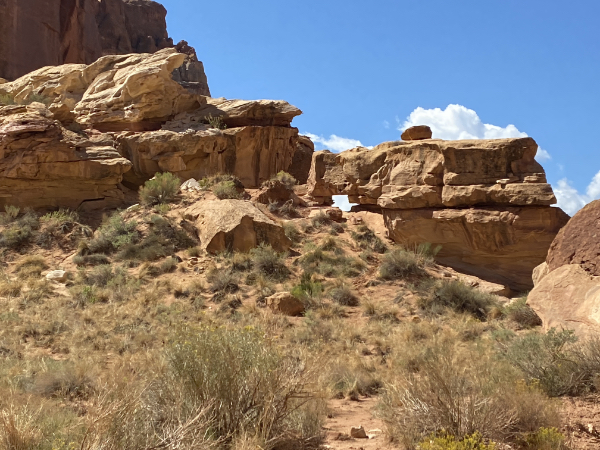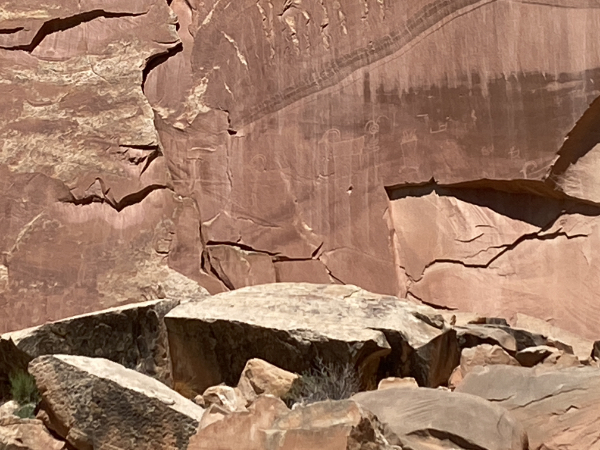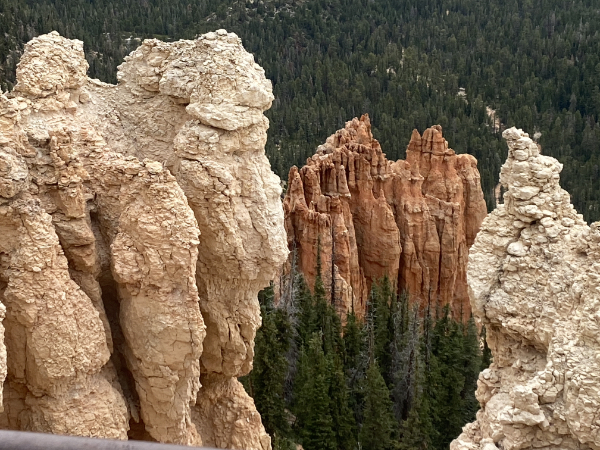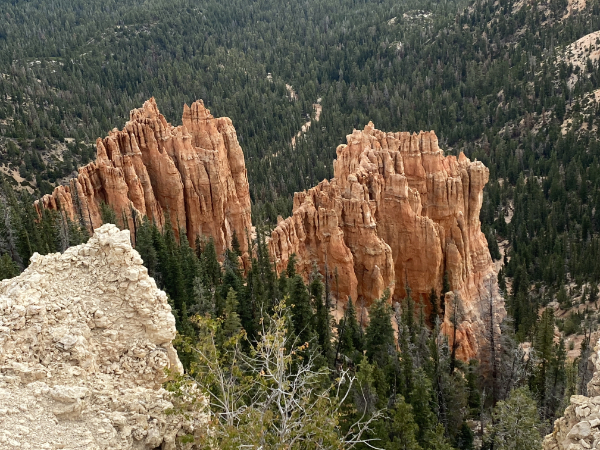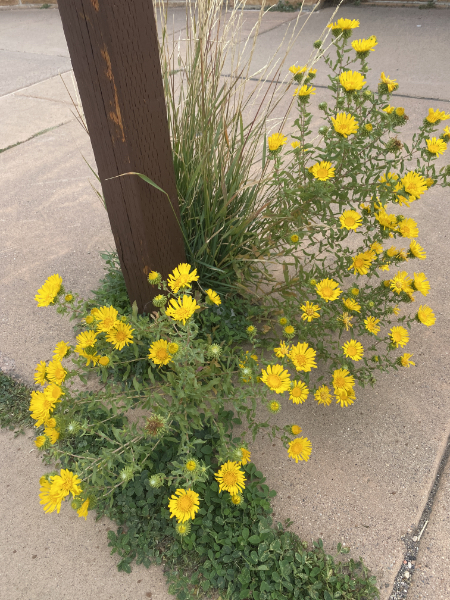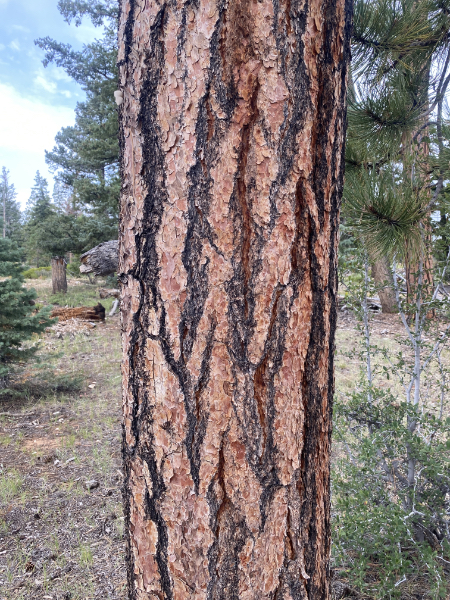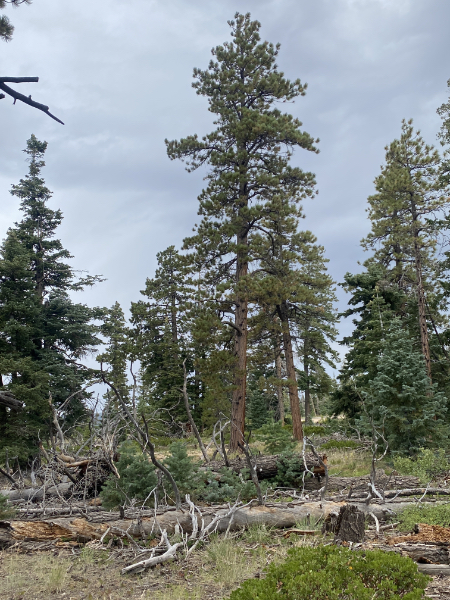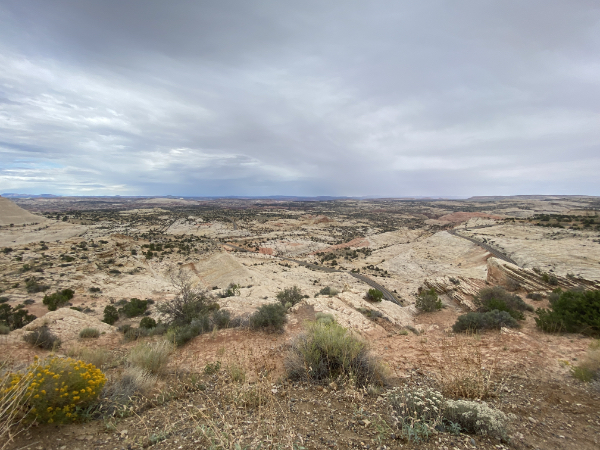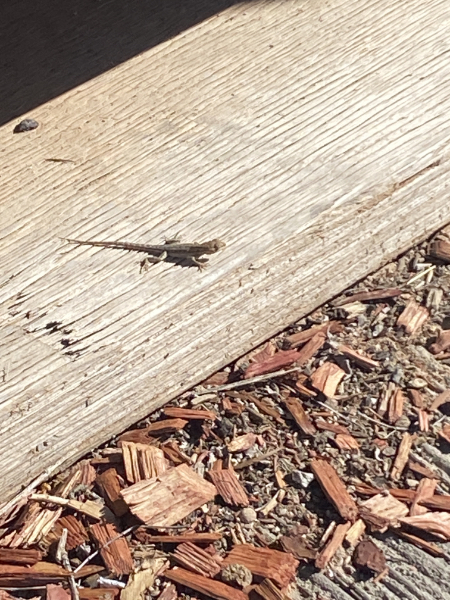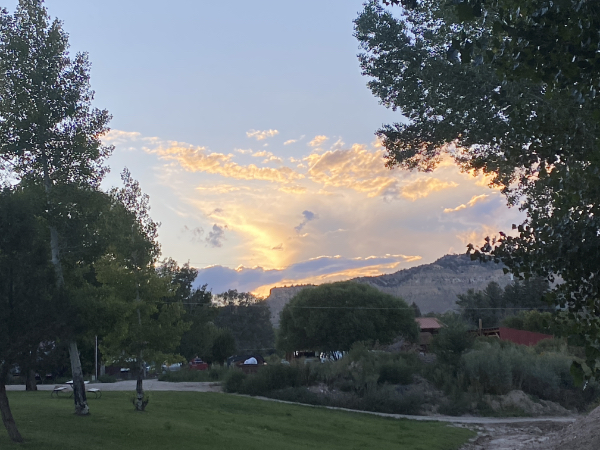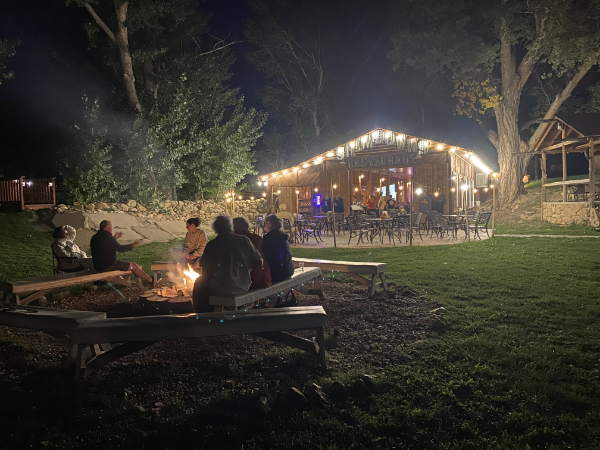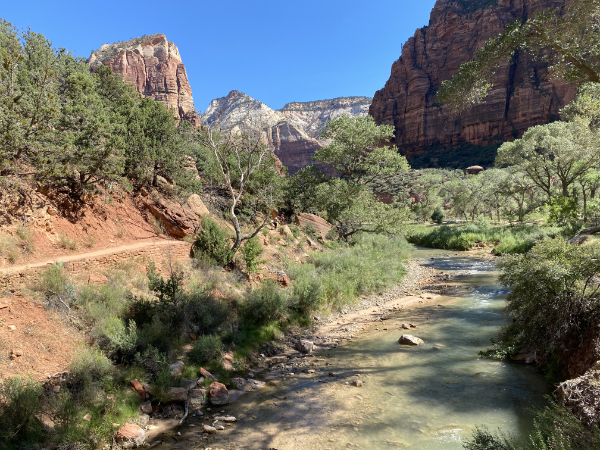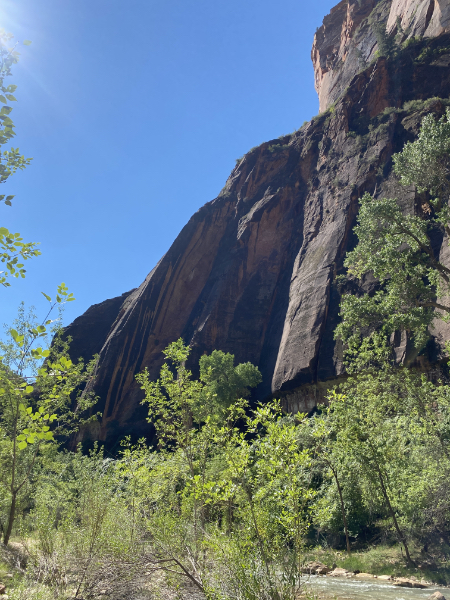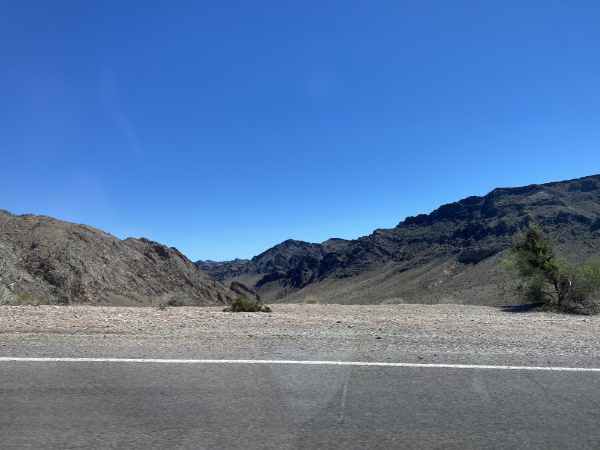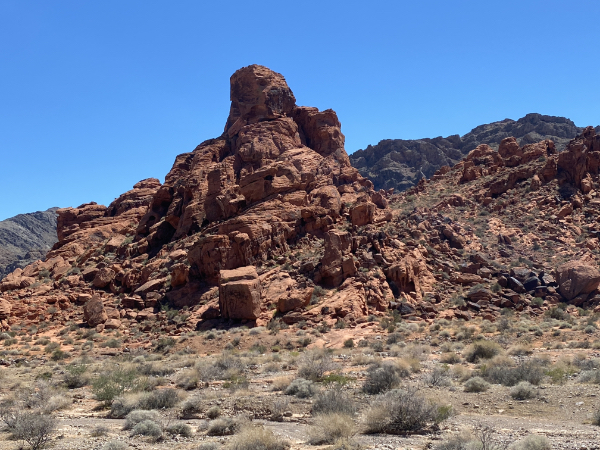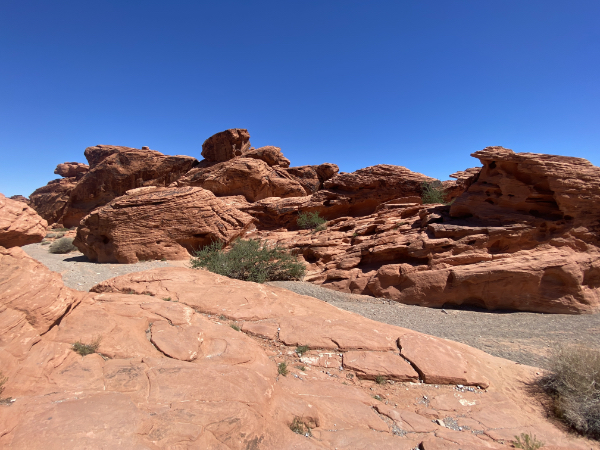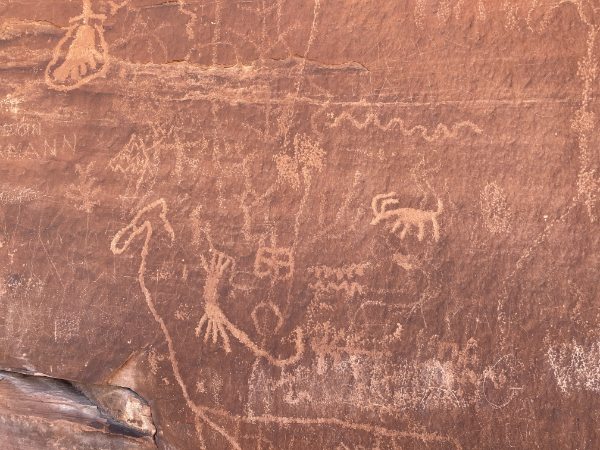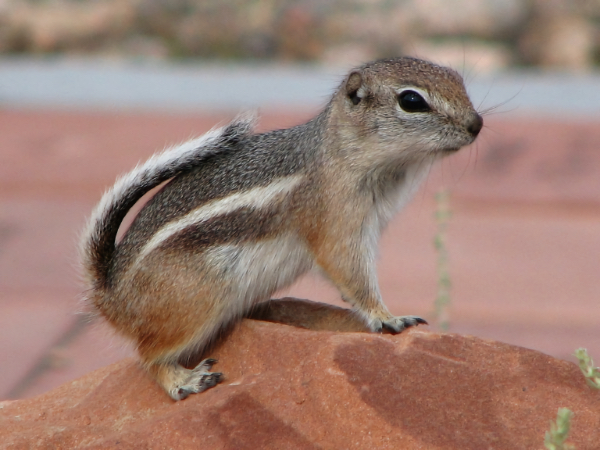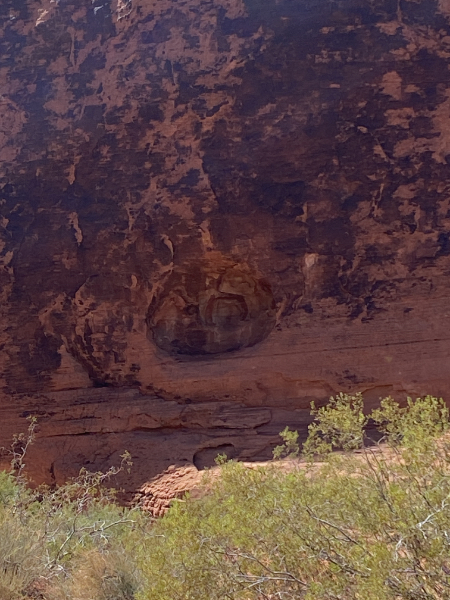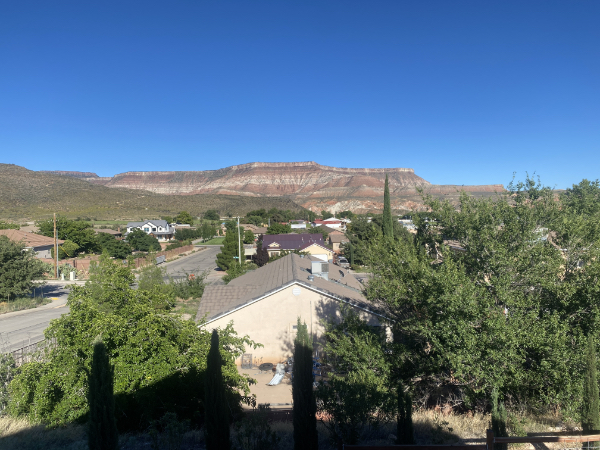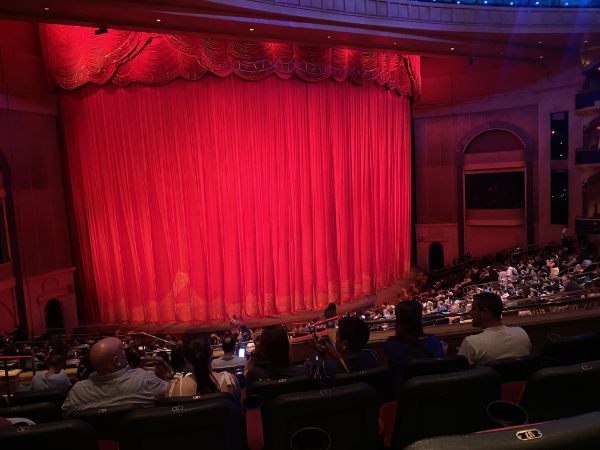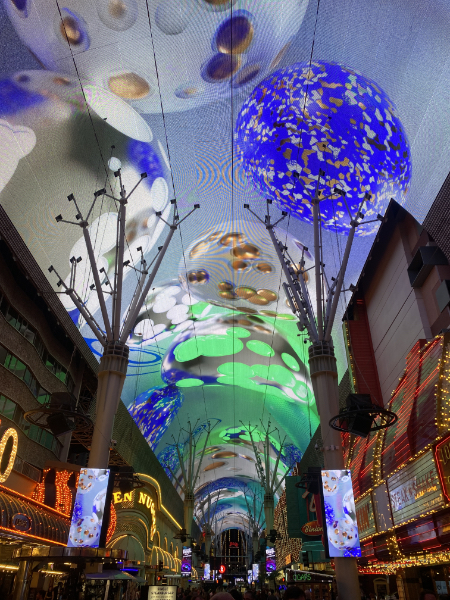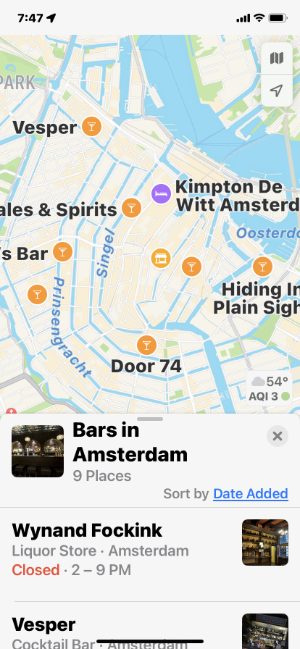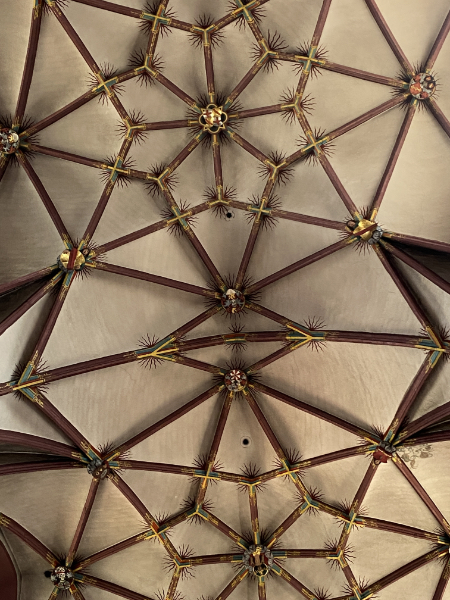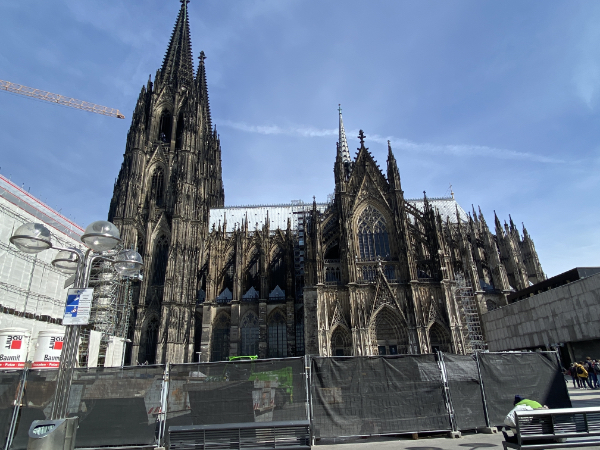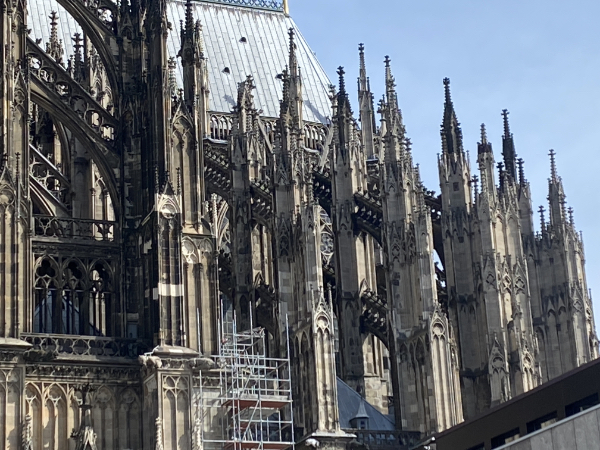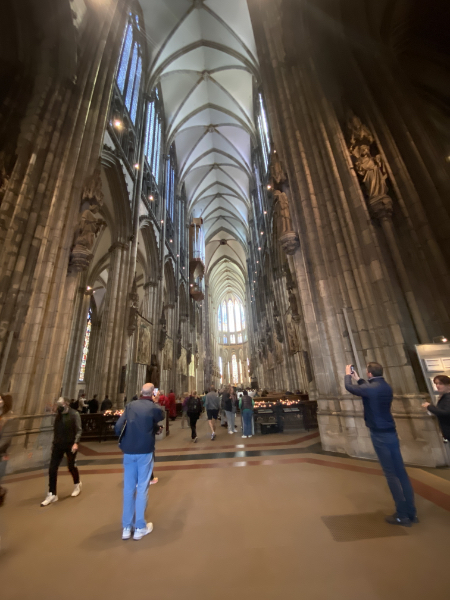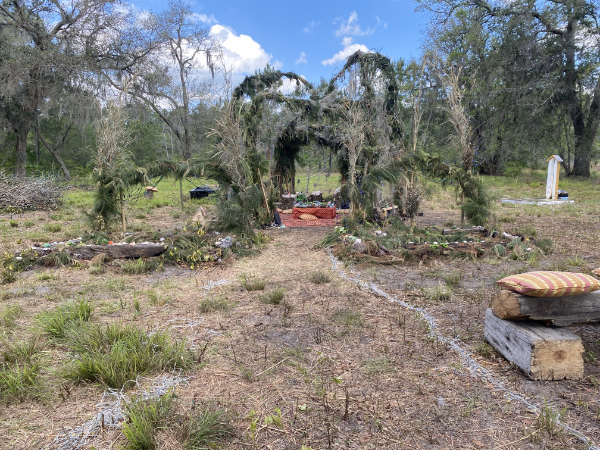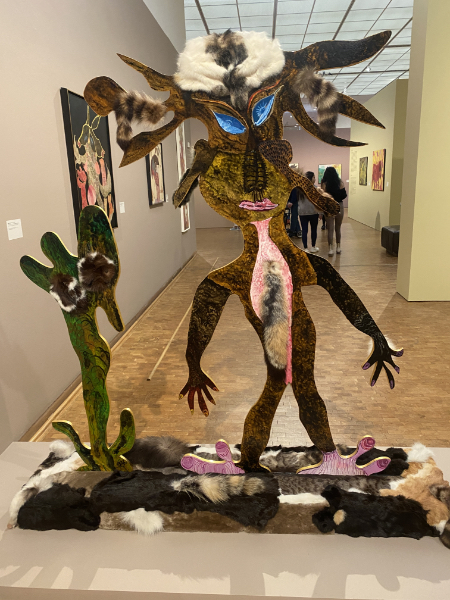Cloudage in the morning at the Rim Rock Inn, Torrey, UT.

Bad cloudage in the morning. The rain skirted us most of the day.

We had to drive through the Capitol Reef area, so we stopped at a pullover we hadn’t stopped at yesterday. As one does.
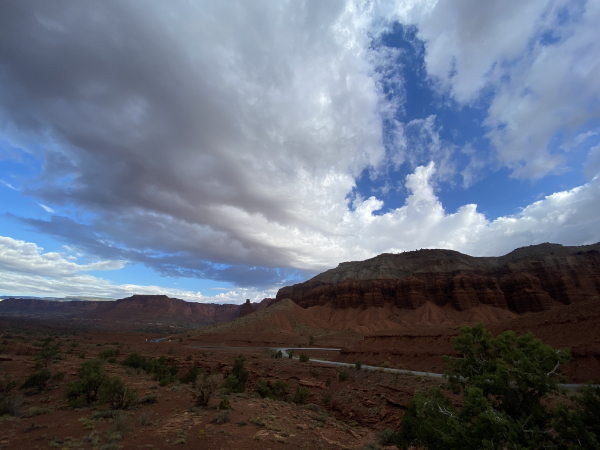
Soon the landscape changed again.


It’s awe-inspiring to remember that each of these layers represents eons of time and erosion on our planet, with each one showing drastic changes in the atmosphere.


A video.
You might think all this barren landscape would get boring, but somehow it never quite does.

Mount Boulder, we think. It is so far the only actual mountain we’ve seen.

Earth was going through some things, apparently.

We stopped in Hanksville for refreshment, and the young man checking us out was also the artist whose works were on display.
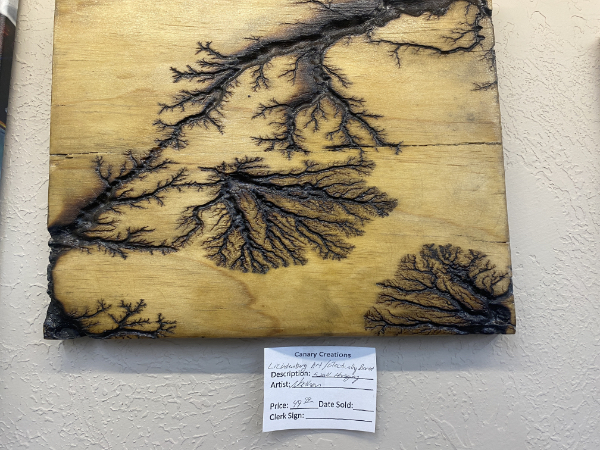
Yes, those are Lichtenberg figures, and yes, they are named after our very own Georg Christoph Lichtenberg. The young man was delighted to learn that the term had antecedents.
More magnificent cloudage.

This was supposed to be a simple travel day, from Torrey to Moab, but Ann at Etta Place recommended that we go off course to see Valley of Goblins State Park. So yay for bonus trips. Hang on.
On the road into the park, there were others.
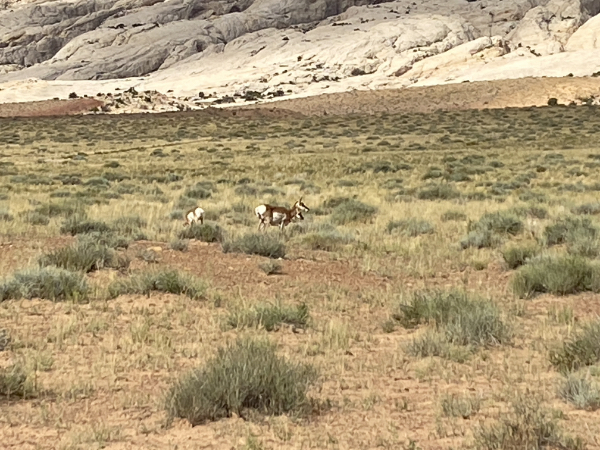
That’s a small group of pronghorn antelopes. I had gotten out of the car to take this photo and was in the process of shooting a panoramic video (not included here), when everybody suddenly started urging me to get in the car. I turned to see…

The buck expressed his displeasure at my presence, snuffing and snorting while I stood between him and his lady friends. I retreated, sensibly, and videoed him from the safety of the back seat.
So, Valley of the Goblins. Let me say that if you’ve never thought of geological erosion as silly, then allow me to bring you some silliness.

One of the appeals of the place is, as Ann put it, “human-scaled hoodoos.” She was not wrong.


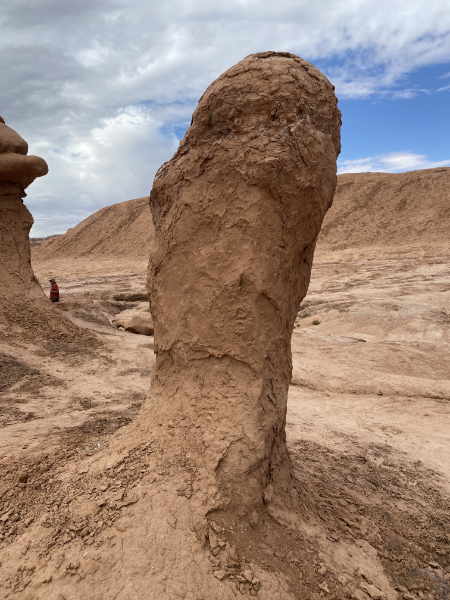
But these isolated examples cannot prepare you for the full story.
Those who are susceptible to pareidolia may now wallow in it.
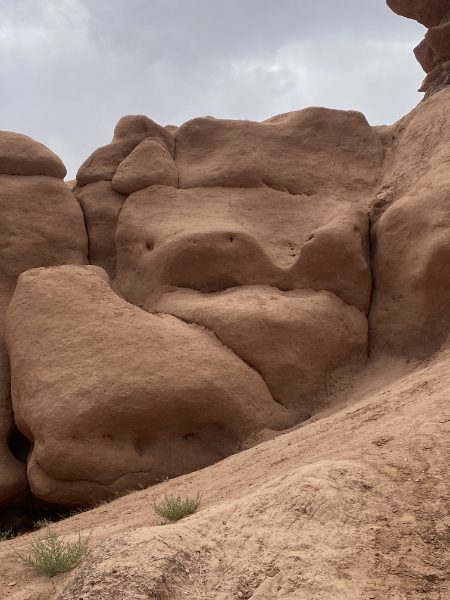
This one looked unhappy for some reason.

Oh, look, a pass, I said to myself.

…so I approached, thinking to walk on through. But it wasn’t a pass.
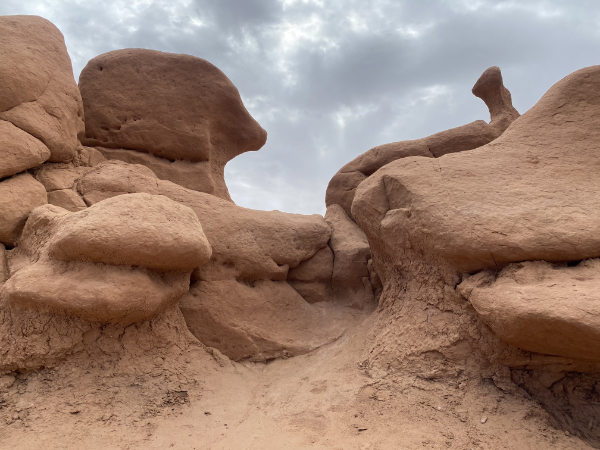
Instead:
…a whole other field of goblins.

Write your own jokes, people.
I don’t know about you, but this whole place just made me giggle.

How big are these things?
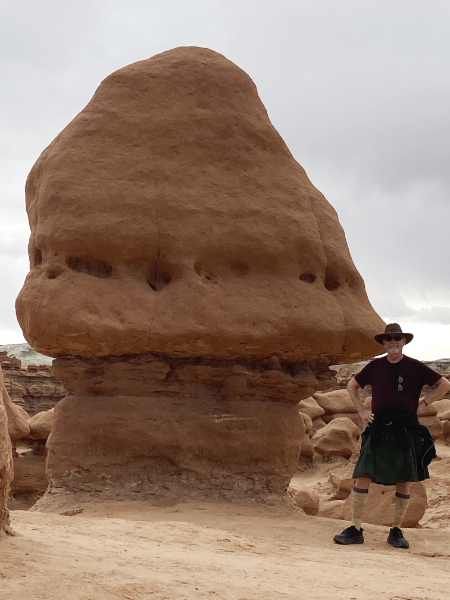
Let’s go walkabout.
At first glance, the goblins seem to be dissolving in front of our eyes, but close inspection shows they are just covered in mud from one flood or another.

A cozy nook.
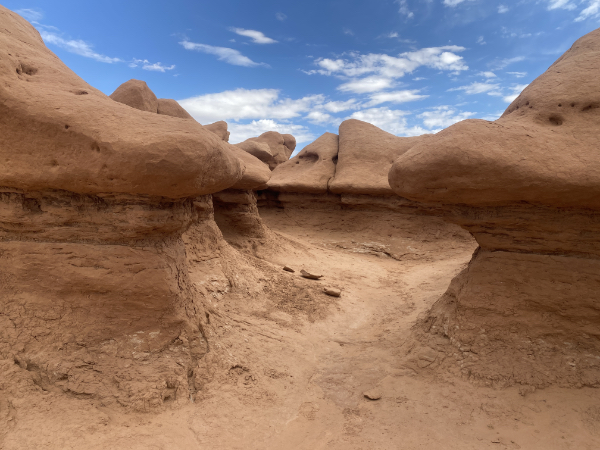
A tiny lizard, about 4″ long, resting his chin on a tiny rock.

There was this huge outcropping that looked green. It was too far away to walk to (for us), but some hikers who had been that far confirmed that it was greenish. I am conjecturing that it’s a efflorescence of copper, somehow.

We named this one the Holy Family.

This was a fun grouping.

Have a video for scale.
We found someone’s home. See the little holes? No clue as to who might live there.

Remember: As macro, so micro. This little gully? It is no different than the forces that formed these canyons. This is how it started.

We clambered down the dirt path to get into the valley…

…not knowing there were actually stairs. We returned that way, needless to say. As we began to climb, I noticed a sign that said Valley 1. There are two more valleys of these things, but you have to hike to get there.

Outside the park is a canyon wall with pictographs. (Petroglyphs, like at Valley of Fire, are carved into the desert–varnish–coated rock; pictographs are painted onto rock walls using ground up rocks as pigment.) Most pictographs that we still can see are under overhangs, i.e., protected from the elements.
The site is barely two miles from the Valley of the Goblins, but the geology is completely different: rock, erosion, everything.

Here’s the site of the pictographs.

The pictographs. Notice how the rock wall continues to flake off; that whole wall was covered with pictures. The tall guy in the middle of the group holding a snake — what’s left of him is six feet tall. The full figure would probably have been eight feet. It is worth mentioning that every piece of rock art we’ve seen has been in an inaccessible spot. None of the documentation at the sites even mentioned that fact, nor how the original peoples would have gotten up there. But it seems to me that this alone indicates that these figures were not idle doodles — the creation of these images was serious business to the people who made them.

Panorama
Back on the road to Moab, with the everchanging landscape.

We stopped for lunch at the Tamarisk restaurant in Green River, and then headed down to Moab, where we checked into the Apache Motel. It is a delight. Click on that link to read all about its history, which includes John Wayne.

We strolled the four blocks to downtown Moab — Moab actually has a downtown, full of shops and restaurants — and ate at Spitfire Smokehouse, a great barbecue place. There was a huge line to get in, but then we learned that if you wanted cocktails with your meal, you had to go around to the rear of the establishment where little children can not see alcohol in use. Indeed, there was a full bar in back, totally uncrowded, and we ate there. With cocktails.
Utah, man.
Next: ARCHES NATIONAL PARK

































